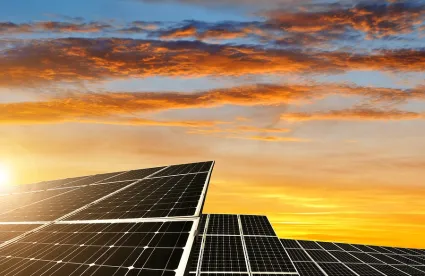Yesterday, the US Trade Representative announced that President Trump approved recommendations to impose a safeguard tariff on imported solar cells and modules under Section 201 of the Trade Act of 1974. The tariff will be in effect for the next four years at the following rates:
![]()
This tariff is the result of petitions filed in May 2017 by two US solar cell manufacturers at the (ITC under Section 201 of the Trade Act of 1974. The petitions alleged that a global imbalance in supply and demand in solar cells and modules and a surge of cheap imports caused serious injury to the domestic solar manufacturing industry. In September, the ITC found injury to the US solar equipment manufacturing industry and, in October, released its recommendations to the White House to impose tariffs. The President’s final decision was in line with the ITC’s recommendations.The first 2.5 gigawatts (GW) of imported solar cells will be exempt from the safeguard tariff in each of those four years. According to the International Trade Commission (ITC), the United States imported approximately 12.8 GW of solar cells in 2016, which was expected to grow in 2017.
Supporters hope the tariff will encourage increased domestic solar manufacturing. Reports are circulating that a solar manufacturer is considering opening a new module factory in Florida. However, critics of the tariff like the Solar Energy Industries Association (SEIA) say that the tariff will result in a loss of 23,000 domestic jobs this year, including many in manufacturing, and will result in the delay or cancellation of billions of dollars in solar investments. The U.S. solar energy industry currently employs 260,000 Americans in jobs ranging from installation to manufacturing racking systems and inverters. The industry created 1 out of every 50 new US jobs in 2016. According to SEIA, only 2,000 people in the United States are employed manufacturing solar cells and panels.
The tariff is also expected to increase solar module costs, with early estimates predicting an increase of 10 to 12 cents per watt based on current US import prices of 35 to 40 cents per watt.
The US Trade Representative’s press release and fact sheet took clear aim at China, singling it out as a major cause of injury to the domestic solar manufacturing industry: “Today, China dominates the global supply chain and, by its own admission, is looking to increase its capacity to account for 70 percent of total planned global capacity expansions announced in the first half of 2017.” The US Trade Representative also stated that it will “engage in discussions among interested parties that could lead to positive resolution of the separate antidumping and countervailing duty measures currently imposed on Chinese solar products and U.S. polysilicon.” Despite the aggressive rhetoric, the tariff will not be limited to Chinese imports.
Additional details on whether any countries will be exempted from the tariff and how the 2.5 GW exemption is determined should be available upon publication of a Presidential Proclamation finalizing the tariff.
Alongside the tariff on solar cells, the Trump Administration also announced a tariff on imported residential washing machines.



 />i
/>i

